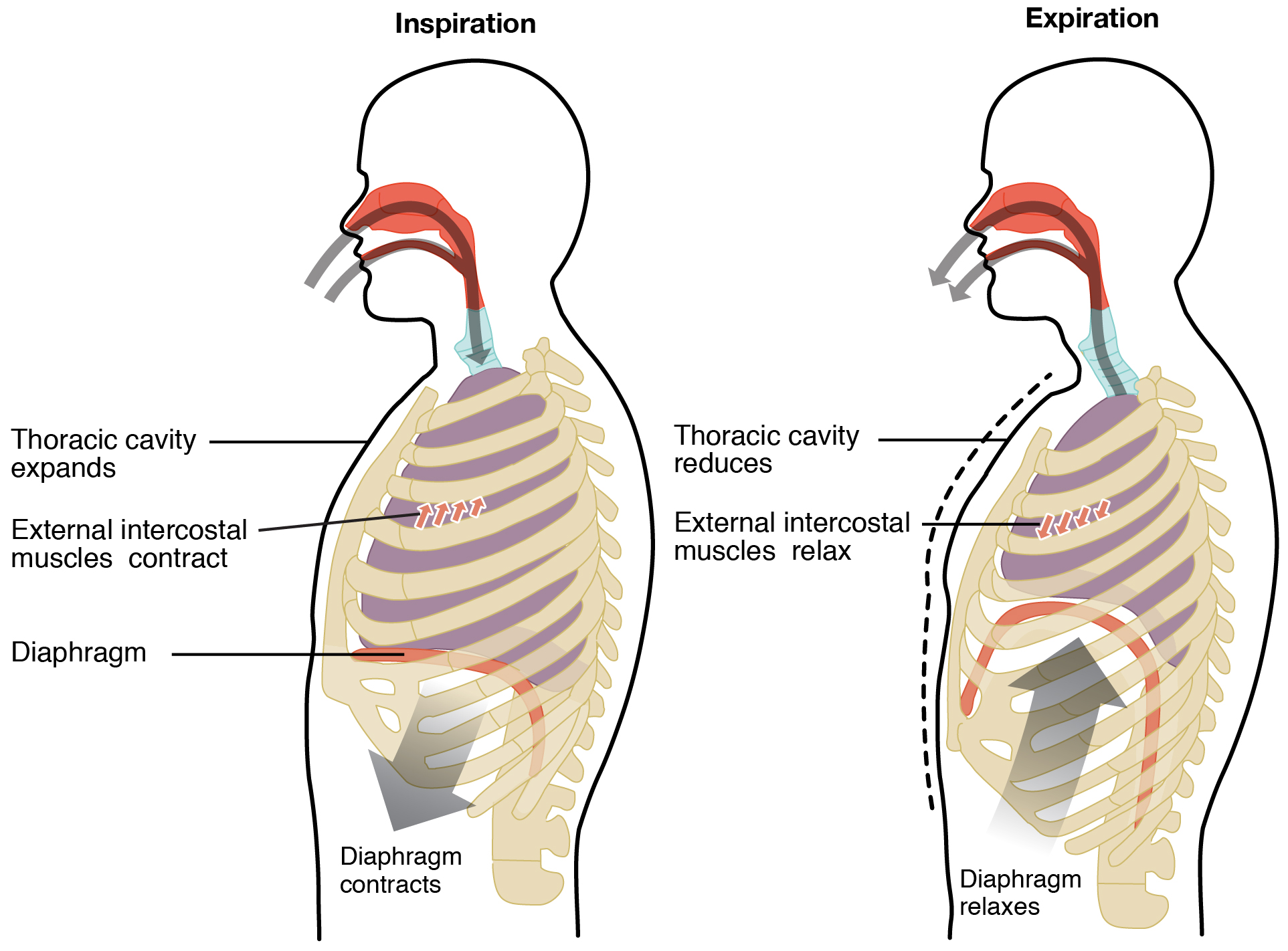4.1.1. Voice emission
As it happens with other instruments, our voice needs an elastic material to vibrate and produce waves. It also needs a way to amplify the sound. As we will see, our bodies have all the needed elements to make it happen.
Voice emission is produced in three different phases:
1. Breathing
It is done through our lungs, with the help of a muscle called diaphragm. There are two types of breathing:
- Upper breathing: we fill the upper part of our lungs with air, like when we take a deep breath. This is not the best way to breathe since we only use a part of our lungs.
- Abdominal breathing: we fill our lungs completely with air, making the abdomen rise. This kind of breathing is the one we use when we are relaxed. As we fill our lungs with air, the diaphragm (a muscle below our lungs) goes down. When exhaling, the diaphragm rises and lets the air out.
When the air travels from the lungs out of our body, it goes through the vocal tract where the vocal cords are. The vocal cords are two small and linked muscles that produce the voice when they vibrate. The expelled air makes vibrate the vocal cords, producing the sound waves that are going to be amplified in the next step.
3. Amplification
The sound generated by the vocal cords (the voice) needs to be amplified in order to be heard. This is made by means of the resonators that are in our body. These resonators are the thoracic cavity, the trachea, the nose, the forehead and the mouth.
This is the phase where each voice acquires its unique timbre.
If we want to speak and sing properly, we need to learn how these resonators work. This way we can get the most of our voice. If we just use our throat instead of our resonators, our voice will be poor and we can damage our vocal cords.
4.1.2. Voice classification
Each voice is unique, but they are classified according to their range or tessitura (range from the lowest to the highest sound in pitch). Other important factor is if the voice is produced by a man, a woman, or a child.Female voices are classified as:
- Soprano: high
- Mezzo-soprano: medium
- Contralto: low
Male voices are classified as:
- Tenor: high
- Baritone: medium
- Bass: low
Children's voices, also known as "trebles" are similar in range and classification to female voices.
Below you can see a chart that represents the range of each voice:

Image taken from https://www.spotlight.com/help-and-faqs/singing-voice-vocal-range-faqs/https://www.spotlight.com/help-and-faqs/singing-voice-vocal-range-faqs/
In the following video, you can listen to some examples of the different tessituras:

